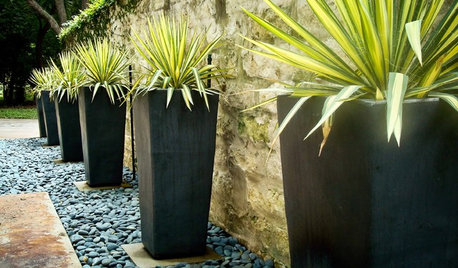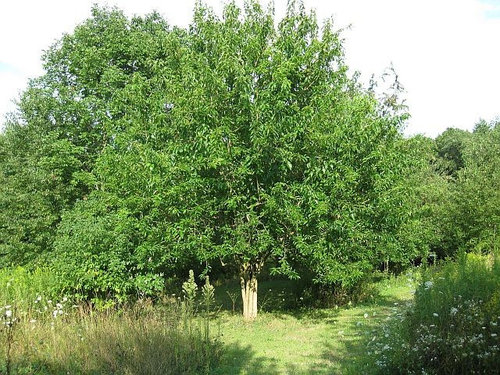one of my favorite trees
tenacre
9 years ago
Related Stories

FARM YOUR YARDIf You Have Room for Only One Fruit Tree ...
Juice up a small garden with one of these easier-care or worth-the-effort fruit trees for a mild climate
Full Story
FARM YOUR YARDIf You Have Room for Only One Summer Crop ...
Get an edible that’s long on flavor even if you’re short on space, with a long-time gardener’s favorite picks
Full Story
EDIBLE GARDENSHow to Grow 10 Favorite Fruit Trees at Home
Plant a mini orchard in fall, winter or early spring to enjoy fresh-off-the-tree fruit the following year
Full Story
CONTAINER GARDENSWant Compelling Garden Minimalism? Think One Plant, One Pot
Highlight a show-worthy stunner or elevate a pedestrian plant by giving it a solo starring role in the garden
Full Story
HOUSEPLANTSOne Pot, One Big Shot of the Tropics
Give your rooms exotic flair in a single stroke. Tall Kentia palm fits the tropical bill beautifully
Full Story
REMODELING GUIDESOne Big Happy Expansion for Michigan Grandparents
No more crowding around the Christmas tree. Friends and extended family now have all the elbow room they need, thanks to a smart addition
Full Story
GARDENING GUIDESGreat Design Tree: Australian Tea Tree
A living sculpture with an unmistakable appearance, this coastal native creates an intriguing landscape scene
Full Story
EDIBLE GARDENSGrow Plum Hybrids for Your Favorite Fruit Flavors
Plums are cozying up with apricots, peaches and even cherries — here’s how to grow these hybrids for the best aspects of each
Full Story
Guest Picks: Quirky Christmas Trees
Take a break from the traditional tannenbaum and opt instead for one of these Christmas tree originals
Full Story
LANDSCAPE DESIGN7 Great Trees for Summer Shade and Fall Color
These landscape-pro faves straddle the seasons beautifully. Could one enhance your own yard?
Full Story









ken_adrian Adrian MI cold Z5
tenacreOriginal Author
Related Professionals
Fillmore Landscape Architects & Landscape Designers · Leawood Landscape Architects & Landscape Designers · West Chester Landscape Architects & Landscape Designers · Washington Landscape Architects & Landscape Designers · Bainbridge Island Landscape Contractors · La Vista Landscape Contractors · North Potomac Landscape Contractors · Oak Forest Landscape Contractors · White Bear Lake Landscape Contractors · Ft Washington Siding & Exteriors · Providence Siding & Exteriors · Fort Worth Decks, Patios & Outdoor Enclosures · Pueblo West Decks, Patios & Outdoor Enclosures · San Jose Decks, Patios & Outdoor Enclosures · Decks, Patios & Outdoor EnclosurestenacreOriginal Author
rhizo_1 (North AL) zone 7
tenacreOriginal Author
sam_md
tenacreOriginal Author
tenacreOriginal Author
sam_md
tenacreOriginal Author
tenacreOriginal Author
tenacreOriginal Author
greenthumbzdude
sam_md
gardener365
bengz6westmd
poaky1
tenacreOriginal Author
lucky_p
gardener365
sam_md
lkz5ia
terrene
bengz6westmd
nuss1 pete
bengz6westmd
nuss1 pete
nuss1 pete
brandon7 TN_zone7
bengz6westmd
brandon7 TN_zone7
nuss1 pete
bengz6westmd